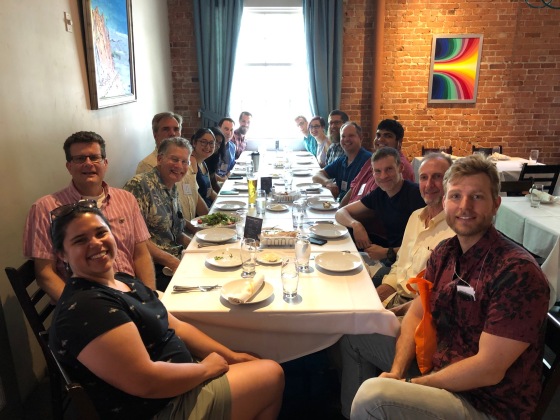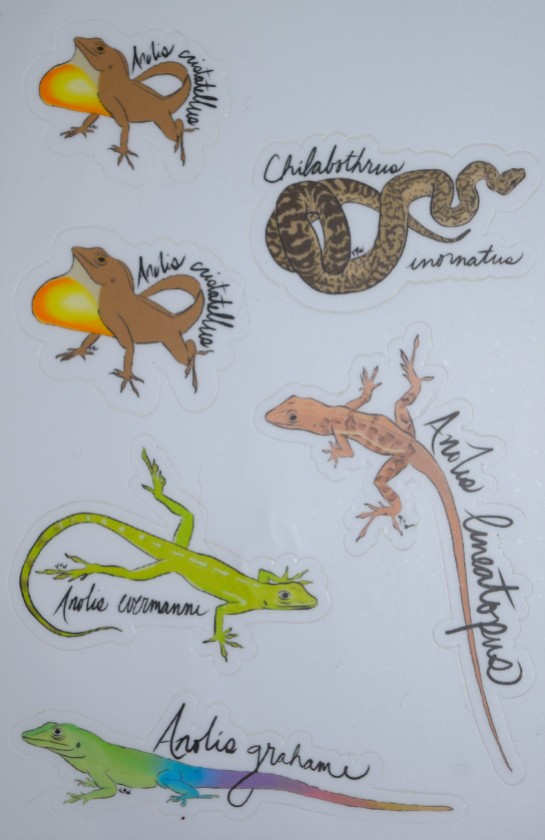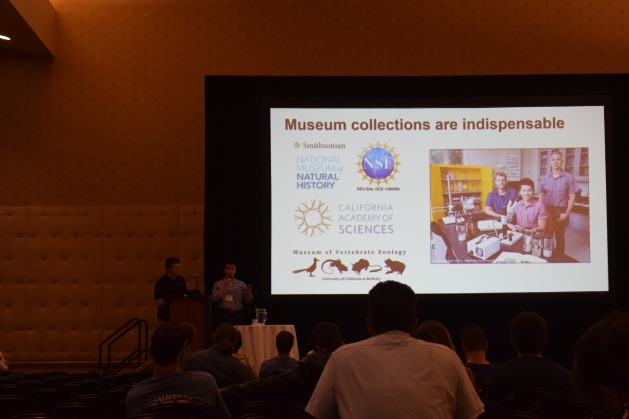
Dewlap variation in A. fuscoauratus. Photos by Ivan Prates.
One of the most well-known and “classic” anole traits is the dewlap, the (usually) colorful flap of skin under the chin that anoles use to display to one another. The dewlap plays a role in numerous anole interactions, including male-male and male-female displays of aggression or courtship. Throughout the Anolis genus, dewlap color and pattern are both quite variable. Dewlap color is thought to be a sign of reproductive isolation, and has been used by researchers to define and recognize species boundaries, although lots of variation within-species exists as well.
Ivan Prates, a postdoctoral fellow at the Smithsonian National Museum of Natural History, has been exploring this variation with the curious case of the Amazonian slender anole, A. fuscoauratus. The species is distributed throughout much of the Amazon, and different populations vary in dewlap color – some are white, some are yellow, and some are pink! Within each population, the dewlaps don’t appear to vary, but different populations have different dewlap colors, seemingly unpredictably. For example, two study populations that are separated by just 60km show different dewlap morphs, with one population having all yellow dewlaps, and the other having all pink. (Note: only males have dewlaps in this species).
This observation led Prates to two questions: first, does the phenotypic variation represent distinct evolutionary lineages? That is to say, are populations with the same colored dewlap more closely related to one another than to populations with different colored dewlaps? And second, what is driving the diversity in dewlap color?
To answer the first question, Prates performed RAD sequencing on a large number of populations throughout the range of A. fuscoauratus. Prates found a fair amount of genetics structure within the species, and identified areas that have experienced high levels of admixture as well. For example, the Atlantic Forest population and northern South American were genetically distinct, but populations within central Amazonia tend to be relatively admixed with one another. Interestingly, he found that this genetic structure of populations was not related to dewlap color at all. Populations with different dewlap colors were present within each of the distinct genetic clades. So each of the dewlap colors did not come from a single source population, and have instead diverged from one another seemingly at random.
So if the genetic structure does not predict the dewlap color phenotype, what does? Previous work on Greater Antillean anoles has shown that dewlap color and pattern vary across habitat types due to differences in light environment and visibility. Denser habitats are thought to lead to more reflective colors and patterns, while more open habitats lead to less reflective dewlaps. Prates therefore used climate data to assess whether environmental variables were correlated with dewlap color. Similar to the genetic results, Prates found no association between climate variables and dewlap color.
What about species interactions? Previous work has also shown that dewlaps can function as inter-species recognition signals. It is expected that anole species that overlap with one another should have distinct dewlaps, in order to efficiently recognize conspecifics in multi-species communities. Prates addressed this hypothesis by examining the dewlaps of other species of anoles that are sympatric with A. fuscoauratus, and assessing whether dewlap variation might correlate with Anolis community composition. Prates found limited evidence for this hypothesis – for example, in areas where it co-occurs with A. tandai, a blue-dewlapped anole, A. fuscoauratus has a fewer gray-dewlapped populations, which are more similar to blue than the yellow or pink morphs. However, Prates also found that even in sympatry with other yellow-dewlapped species, A. fuscoauratus does not have a reduction in yellow- or white-dewlapped populations.
So what is driving this dewlap diversity? So far, there’s no smoking gun, but a few suggestions come from the data. Prates plans to continue working on this question by digging deeper on both genetic and environmental scales. Stay tuned!





















